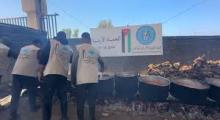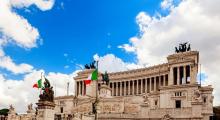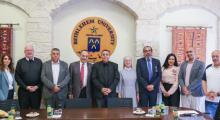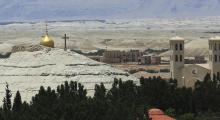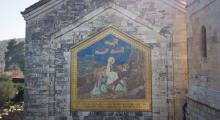Issued by the Catholic Center for Studies and Media - Jordan. Editor-in-chief Fr. Rif'at Bader - موقع أبونا abouna.org
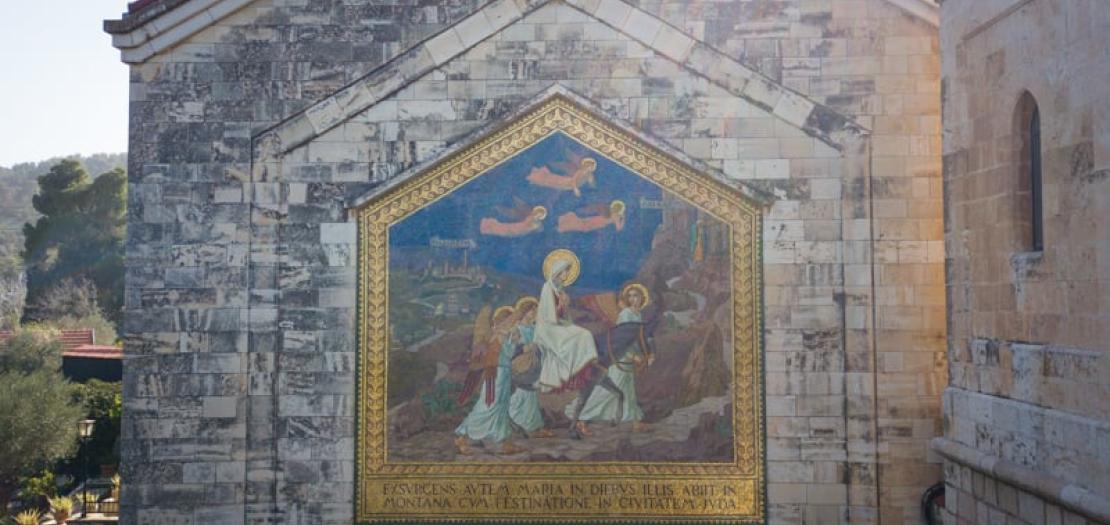
On Saturday, May 31, 2025, the friars of the Custody of the Holy Land celebrated, as per tradition, the feast of the visitation at the sanctuary of Ein Karem, just a few kilometers from Jerusalem. This evocative place, which Christian tradition identifies as the home of Zechariah and Elizabeth, welcomed pilgrims and religious in an atmosphere of joy and prayer, to commemorate the meeting between Mary and Elizabeth as narrated in the Gospel of Luke (1:39–56).
In his homily, the custos of the Holy Land, fr. Francesco Patton, led the celebration with a reflection centered on three essential verbs: to visit, to believe, to rejoice. He opened the meditation with a personal memory: nine years ago, on the very day of the visitation, he made his first spiritual stop in the Holy Land before his solemn entry into Jerusalem. Since then, his journey of guarding the holy places has been deeply intertwined with the profound meaning of this Marian feast.
The Visitation in the Holy Land
The liturgical commemoration of Mary’s visit to Elizabeth dates back at least to the 13th century, but it was officially introduced into the Roman calendar in 1389 by pope Urban VI and originally set for July 2. Following the liturgical reform of the Second Vatican Council, the date was moved to May 31, placing it symbolically between the annunciation (March 25) and the nativity of John the Baptist (June 24).
In the Holy Land, the sanctuary dedicated to the visitation, located in the hillside village of Ein Karem, is a key pilgrimage destination, cherished for its beauty and deep spiritual resonance. The church, built by the Franciscans in the 20th century upon older ruins, houses the Magnificat in over forty languages, a powerful sign of the universal message of the Gospel.
Visiting: a gesture of concrete love
The first verb highlighted in the homily was to visit. After receiving the angel’s message in Nazareth, Mary sets out "in haste" to reach her elderly cousin Elizabeth, who, though once believed barren, is now expecting a child. To visit, fr. Patton emphasized, is not merely a physical journey but a movement of the heart: it is about care, closeness, and the gift of presence. In Mary’s case, that gift is the greatest of all—Jesus, God-with-us. It’s no coincidence that scripture often uses the expression “God visited his people” to describe his saving mercy.
This dynamic of “visiting” becomes a tangible call for each of us: to visit the sick, the elderly, our brothers and sisters in their spiritual and material needs, as a sign of hope and fraternal love.
Believing: trusting God deeply
The second verb is to believe, the very heart of the relationship between Mary and God. “Blessed is she who believed,” Elizabeth proclaims in the Gospel. Mary thus becomes the icon of a faith that is free, voluntary, personal, and profound. To believe, the custos reminded the faithful, is to open oneself to the word of God and allow it to work in one’s life. It is this trust that enables Mary to live every moment of her life—from the annunciation to the cross—with the deep conviction that God is faithful to his promises.
Rejoicing: a joy born of the Spirit
Finally, to rejoice. The Gospel account of the visitation is a scene of exultation: Elizabeth rejoices, the unborn John leaps in her womb, Mary proclaims the Magnificat, and even Jesus—still invisible—is already present in the fullness of his divinity. It is the joy of the Spirit, which does not deny the suffering of the world, but transforms it—allowing us to see history through God’s eyes.
“In a time marked by war, poverty, and violence,” said the custos, “the Spirit makes us dance, gives us new eyes, and a living hope.”
A prayer for the journey
At the conclusion of the celebration, fr. Patton cited a prayer by mons. Tonino Bello, the late Italian bishop and prophet of peace, invoking Mary as a traveling companion and mother of concern. “As we too become pilgrims in faith,” he prayed, “may we hurry toward the city, bearing the same fruits of joy that you brought to Elizabeth.”
A powerful message resounds for all believers: to be, like Mary, bearers of joy, caring visitors, steadfast believers, and dancers in the Spirit.
On this May 31, 2025, from Ein Karem rises a universal call: to rediscover the beauty of the visit, the strength of faith, and the prophecy of joy, because truly—as Mary proclaims—“the Almighty has done great things for me.”


